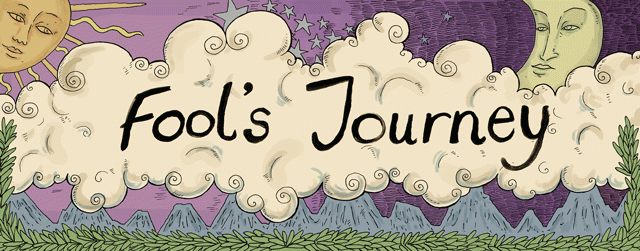
Header by Rory Midhani
Reading tarot cards is an interpretive process. For many people (though certainly not all), carrying out a tarot reading means looking at the images shown on the cards, and deriving meanings, stories, ideas, from what is seen. Some decks are very literal, with pictures showing real-life situations, making them relatively easy to interpret. Others are more figurative, with abstract images that make deriving meaning far less straightforward.
One thing many decks have in common, however, is the use of certain symbols which crop up repeatedly in our cards and carry their own specific meanings. Learning to read these symbols and developing your ideas about what they mean can really enhance your tarot readings.
Below are a few common symbols to look out for in your own tarot cards. Bear in mind that the meanings I’m sharing here are just starting points, that the artist of your deck may have had totally different ideas, and that ultimately, it’s you, the tarot reader, who gets to decide what each card means and what those symbols and images mean to you
Context is everything. When you see these symbols, look at the setting as well as the thing itself. If it’s an object, who is holding it? If it’s an animal, what is it doing? If it’s part of the landscape, where is it in relation to the subject of the card? How do other elements of the card interact with this symbol? This is all about reading between the lines here — looking beyond the obvious and finding subtler stories hidden in the pictures on our cards.
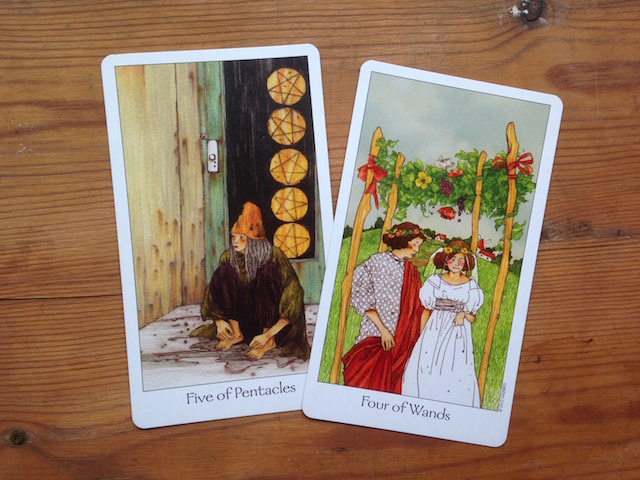
From the Dreaming Way Tarot
Gateways, doorways and arches
These suggest a ‘passing through’, perhaps from one part of your life to the next. There’s a sense of something on the other side, and a choice about whether to go there. In many cards, you can actually see what lies beyond the gateway, for example, a mountain, or a flower garden, adding further depth to this symbolism.
The moon
Aside from card no.18 — The Moon — itself, the moon regularly appears in tarot cards. It’s a symbol of mystery, intuition, the unconscious, the ability to go ‘beyond the veil’, to see what is hidden, and to tap into psychic powers. The High Priestess card usually shows a moon — often on the priestess’s crown.

From the Wild Unknown Tarot
Seas, oceans, lakes
Bodies of water represent our inner state and can illustrate how we are doing emotionally, as well as being symbols of our subconscious (a little like the moon). In the Six of Swords below, we see a group of people crossing water, suggesting an emotional journey. (It’s also significant that we can see the destination on the horizon, giving a sense of hope.) The King of Cups, meanwhile, sits on a rocky plinth, apparently afraid to get his feet wet.
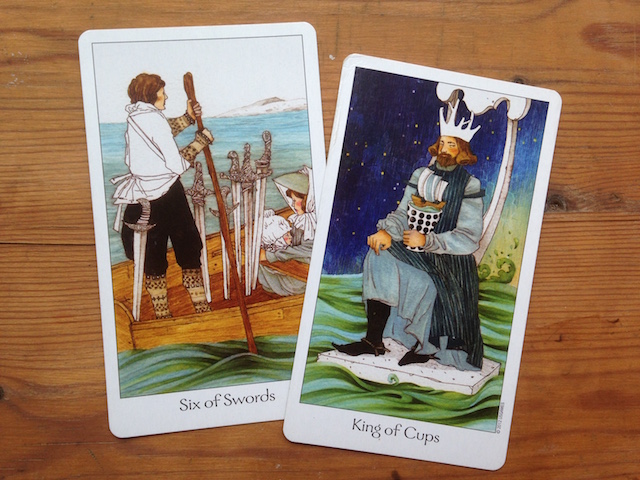
From the Dreaming Way Tarot
Look also at the behaviour of the water. Is it calm or tempestuous, stormy or inviting? What does this say about your emotional state?
Lizards, geckos and snakes
These creatures, which shed or change their skin, represent adaptability, change and growth. They are also symbols of fiery potency and creativity. Compare the Rider-Waite-Smith’s Knight and King of Wands; both figures wear cloaks decorated with lizards, representing their creative powers. However, only the King’s lizards move in ‘full circles’, representing this card’s level of maturity. The King will successfully finish any project that they start, whereas the Knight, with their ‘incomplete circle’ lizards, may not.
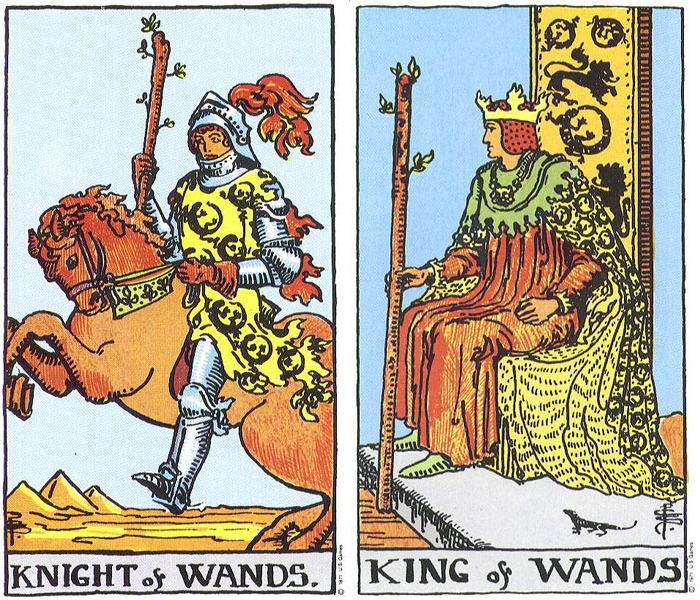
From the Rider-Waite-Smith Tarot
Birds
Often seen soaring high above the main subject of the card, a bird can represent ‘higher thought’, wisdom, reaching new levels of understanding, gaining a clear perspective, or taking a wider viewpoint on a situation. Check out the birds above the Queen of Swords in the Rider-Waite-Smith tarot, for example. They can also indicate freedom and the ability to go where one chooses.
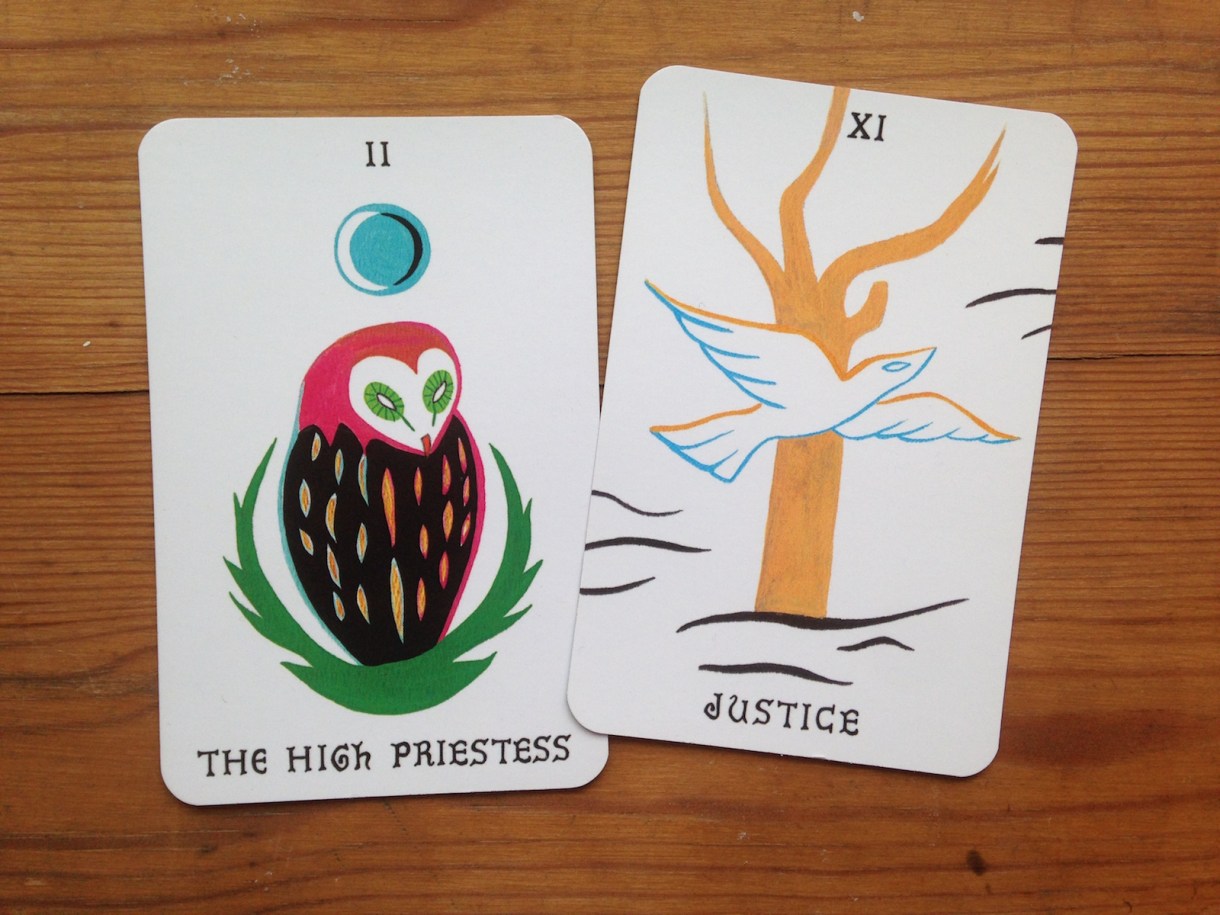
From the Laughing Eye, Weeping Eye Tarot
Keys
Often seen in the Hierophant card, a key can represent special or hidden knowledge that is learned or passed down. There can sometimes be the feeling that the key is ‘earned’ in some way, that you receive it after being initiated or allowed into some kind of institution or establishment.
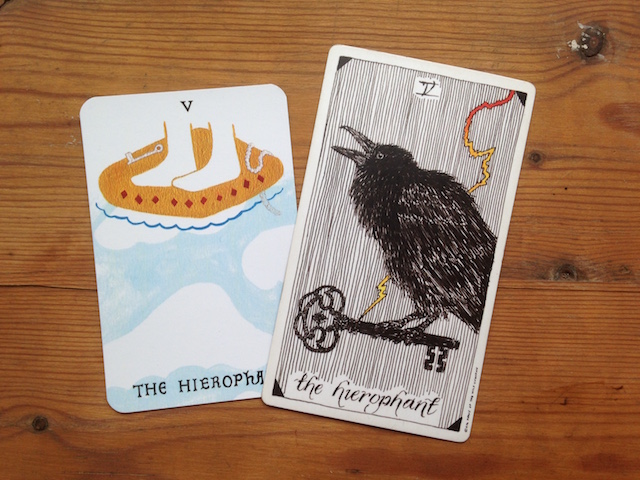
From the Laughing Eye, Weeping Eye Tarot and the Wild Unknown Tarot
Towns, cities, villages
These represent communities and society. It’s interesting to note where these symbols appear in relation to the main subject — for example in the Rider-Waite-Smith Ten of Pentacles, the image is set in a bustling marketplace within the city walls , whereas in the Four of Pentacles, a lone figure sits with their back to the city, suggesting isolation.
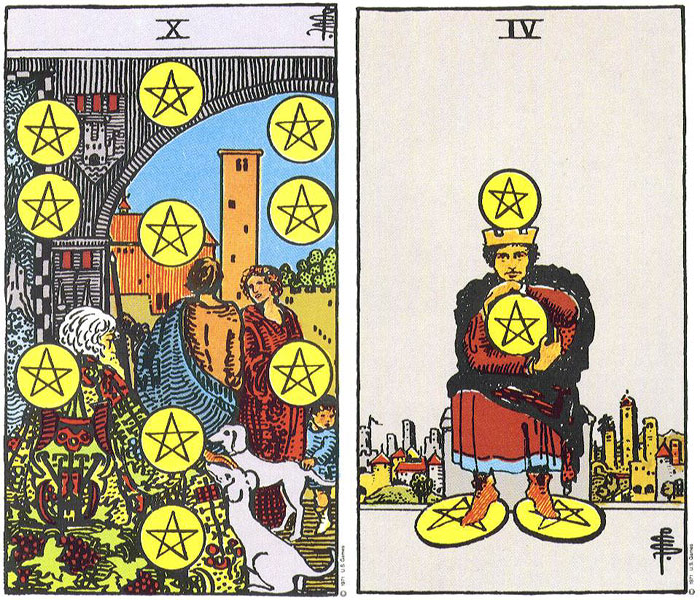
From the Rider-Waite-Smith Tarot
Stars
Just as travellers in ancient times navigated by the constellations, in tarot (and in general) stars represent finding your way, seeking or offering guidance, and navigation.
Landscape
It’s easy to focus on the foreground of a tarot card and miss what’s happening on the horizon. I’ve already mentioned seas, but we also see forests, deserts, mountains and more in our cards. How do these landscapes feel to you? A forest may represent growth, or it may suggest becoming lost. A mountain feels like a challenge when you’re standing at the bottom, but when you reach the top, it’s a place from which you can gain a wonderful, wide perspective. Deserts are hot and dry places where little grows, perhaps not a place to hang out for too long unless you’re well-equipped for the harsh environment. A blossoming garden, on the other hand, represents nurturing, love and kindness.
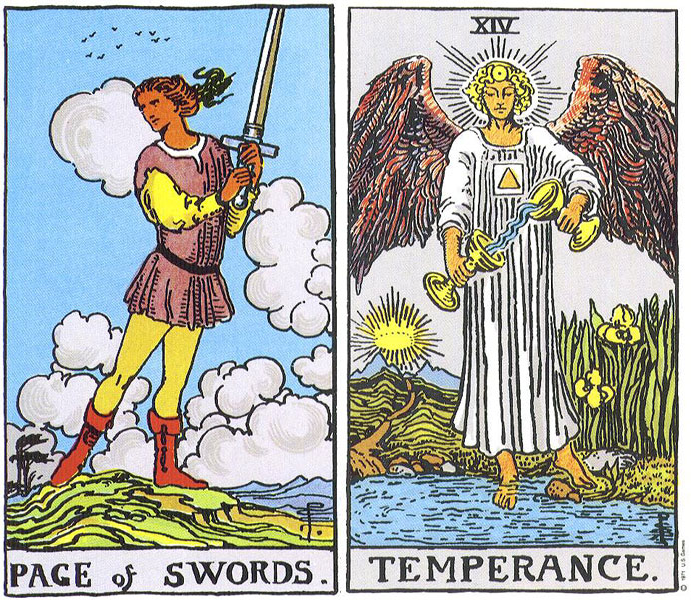
From the Rider-Waite-Smith Tarot
And don’t forget the sky! Stormy or calm, grey or bright blue, like the sea, the sky is a reflection of the card’s — and thus the querent’s — mood and temperament.
Of course, the four traditional suits of tarot are each symbolic too. Swords represent truth, and a black-and-white understanding of the world, hence often appearing in cards such as Justice. Wands symbolise a creative, active force (think of a ‘magic wand’). Cups, as vessels for water, represent the fluidity of spirituality, feeling and intuition. And Pentacles, often shown as coins, are solid and can represent money and resources.
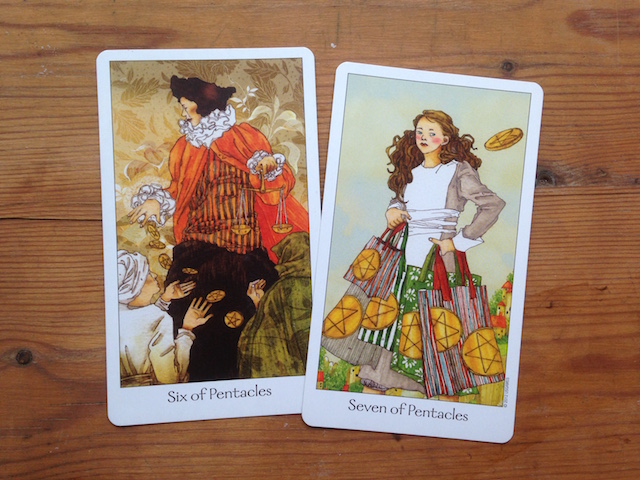
From the Dreaming Way Tarot
It’s also worth noting the connotations between some of these symbols and the four elements (e.g. the sea links with the element of water, a bird links with the element of air). Here’s a helpful post about the four elements in tarot, and the four suits!
These are just a few of the many, many symbols you’ll find in your tarot cards. If you want to take this further, check out Tarot Teachings by Avia Venegica (a woman gloriously obsessed with symbology, whose work goes far beyond tarot) for endless lists of symbols and their possible meanings. I also recommend Pictures from the Heart: A Tarot Dictionary by Sandra A Thompson, a handy and lovely book in which you can look up the symbols you find in your cards.
Over to you! Which symbols have you noticed on your cards, and how do you interpret them?



Thanks for this – I’ve sometimes wished to have a general symbology on hand when I bust out my tarot deck.
One thing I pay attention to is whether the “main” person depicted in the card can see. I only have the Rider-Waite-Smith deck currently, and I tend to get the eight and nine of swords a lot, along with the five of cups. Two of these cards feature characters that are hiding their own eyes, one is blindfolded. So when I get these cards, I make a point of asking myself if I’m looking at the big picture in my life, and try to think what I may be ignoring or refusing to acknowledge about the situation at hand.
@vardylikeits1999 Oh yes – that’s brilliant! Blindfolds are so significant aren’t they.
In the Dreaming Way tarot (and many others) Justice is also blindfolded, which is quite a different significance – where the Eight of Cups character seems to be ‘not letting themselves see the truth’ and the message is that it would be good to take off that blindfold and look around, in Justice, it’s more like being blind to grey areas in the interest of fairness and objectivity.
As for the Two of Swords, I swing with the blindfold there. Sometimes it seems to be inhibiting, holding me back, but sometimes it seems necessary – like creating a boundary in a traumatic time.
This is great! I love this!
Thank you so much for this, Beth~!! <3 Love this so much! This is just what I've been looking for!
I don't have my tarot deck (I only have "The Tarot Of Vampyres" by Ian Daniels) with me but I can't wait to practice this a bit more!
thank you! i am trying to get more facile and make my readings smoother, instead of flipping through a billion books all the time. With this, the symbology of the suit itself and the numerology of the cards–I feel a lot more nimble!
It’s very a good and useful piece of blog.
I am glad that you
shared this helpful information with us. Please keep us
up to date like this. Thanks for sharing. jual bibit bunga
Ruth Ann and Wald Amberstone’s _The Secret Language of Tarot_ is an amazing book on the symbols found in tarot. It has some really cool spreads based on the symbols too.